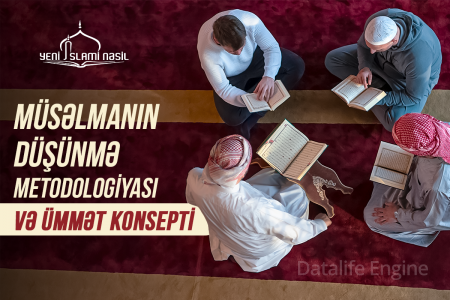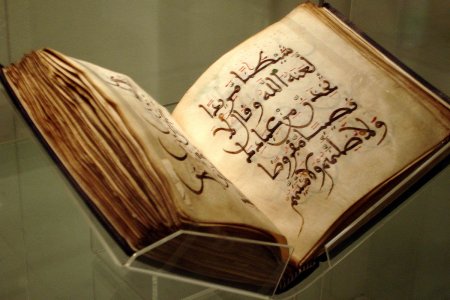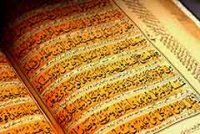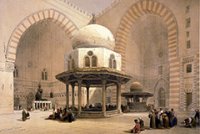The Qur'an is like no other book
...
In the verses above, God challenges anyone with doubts about the Qur'an being His Word to try and imitate it - since a book from God would not be able to be made by any human, even with the help of others.
Despite the finite grammatical rules and the 28 letters that make-up the Arabic language, the Qur'an has not been matched since it emerged...to this day! No one has managed to make anything like it despite the many attempts - bear in mind the Arabs were a race that prided themselves in the art of poetry and were still unable to come close to anything like the Qur'an.
The Qur'an is considered a living "miracle" (an event which lie outside the productive capacity of nature) - meaning that it is not just its revelation which was miraculous - but every time it is recited it is a miracle being performed (this is why every verse of the Qur'an is called a proof [of God]). Many miracles of old were intended as proofs [of God] -but mainly for the people who witnessed them. later generations had to rely on witness testimony to believe in them, however, the Qur'an is a miracle which can be witnessed right now - by you and I. So why is the Qur'an considered a living miracle ( and thus proof of God)?
If we examine any one of the Qur'an's unique features, it is evident that the book is like no other.
- Surface level:
- A New Literary Style that is beautiful to hear
- Meaning level:
- A Natural & Simple Core Message (as opposed to complex theistic concepts and mystical ritualistic dogma)
- Scientifically Accurate (many only confirmed with recent scientific and technological developments)
- Historically Accurate (many only confirmed with recent archaeological findings like the long lost ancient city of Iram mentioned in the Qur'an, the 18th Century discovery of the Rosetta stone finally allowing hieroglyphs to be deciphered, and the 20th Century discovery at the Qumran caves of the Dead Sea Scrolls which have been lost since 1CE, well before the Qur'an's time)
- Unseen levels
- Ease of Memorising (despite being a bigger book than the Old and New Testament combined - it is memorised by millions - some as young as 4 years old!)
- Wise laws (forming a fully functioning and holistic political, philosophical, and spiritual system for humanity to live in harmony)
- Mathematical (the frequency and patterns of words and letters used in the Qur'an are based upon the prime number 19)
- Curing Properties
- Exorcises Demons
A few of the above points (highlighted in red) shall be explained in further detail below:
++++++++++++++++++++++++++++++++++++++++++++++++
1.1. A New Literary Style:
1.1.a.A Unique Style
The Qur'an is an entirely new literary style that cannot be categorised into any of the known literary forms. The Qur'anic rhythmic style also does not fit into any known Arabic rhyming &/or prose styles - each based on a distinct rhyme scheme, syllabic rhythm, or accent-based rhythm (ie patterns of stresses rather than syllable count- e.g. "ba ba blacksheep"). The Qur'an can neither be classified as prose or poetry, because it is a unique fusion of both ("rhymed prose") - more poetic in some parts and more prose-like in others.
The Qur'an exhibits complex interrelations between sound, structure and meaning. For example, as the meaning or topic in the Qur'an changes so too will the assonance and rhyming pattern.
1.1.b. A Unique Structure
The Qur'an is not structured into the typical beginning, middle and end format. It has a nonlinear structure akin to a web or net –( bringing to mind many naturally occuring structures - which is fitting since a book from God should mirror designs found in His other works -i.e. nature) - that acts as a powerful literary device capable of amplifying the intensity of the message.
The outwardly scattered / fragmented composition is elegantly contrasted by the subtle phonetic and thematic substructures which give rise to meaning layered with meaning, light upon light, miracle after miracle.
Other literary clues which strongly suggest that the Qur'an was not written by a human being are the inclusion of such unusual details - i.e. the mysterious disconnected letters (with no apparent meaning) at the beginning of certain chapters
"A. L. M" [Qur'an 2.1]
or tag words found throughout the book like "Say:..." - remnants from orders given to Muhammad s.a.a.s. by the author of the Qu'ran [i.e. God].
"Read: in the Name of your Lord" [Qur'an 96:1].
Further note how the length of a single verse is sometimes too long to be recited in a single breath. The verse's flow needs to be interrupted and broken into parts when reciting as the human lung capacity is simply not large enough to recite the entire verse in one go. However a poet would intend for a verse they thought up to be recited whole so as to avoid disrupting the poem's rhythm or rhyme. Who would write a verse longer than they could themselves recite unless the author was not limited by the human lung capacity
Another highly unusual but clever technique (not common among human authors) is its highly self-referential nature; the Qur'an often makes reference to itself!
"That is a book [there is] no doubt in it, a guide for humanity" [Qur'an 2:2].
1.1.c. A Sea of Rhetoric
The use of rhetoric in the Qur'an stand out from any other written or spoken discourse. The frequency of rhetorical devices surpasses any other Arabic text; classical and modern. Many literary and linguistic devices are employed in extremely creative and sophisticated ways (that have not been used before) to achieve an unparalled communicative effect.
Grammatical shifts are cleverly orchestrated and word order is specifically used to imply further meaning - as with the specific choice of words used.
"O children of Israel,
remember My favours
that I favoured you with
and fulfil My covenant,
I fulfil your covenant,
and to Me Alone fear"
[Qur'an 2:40]
The above verse has been translated maintaining the original word order as much as possible. What you will not notice from the translation is that the word used for "fear" in this verse is specifically chosen. This becomes apparent when one realises there are many common, alternative Arabic words for "fear" which are widely used elsewhere throughout the Qur'an (such as "Khauf" or "Taqwa"). This is one of the few places where this more exotic, unusual rendering is used for "fear". "arhaboun" (root word: "R-H-B") happens to be from the same root as that word "Rabbi" ("Rahbaniyoun" - see Qur'an [5:82], [9:31], [9:34]) - an interesting "coincidence" since the verse is specifically only addressing "the Children of Israel".
- Analogy(textual comparison between two sets of words to highlight some form of semantic similarity) [Qur'an 88:15–16] [Qur'an 93:9-10]
- Alliteration(repeating the same consonant sound within several words in close succession)[Qur'an 33:71] [Qur'an 77:20]
- Antiphrasis(an expression used to mean the opposite of its usual sense, especially ironically) [Qur'an 44:49]
- Antithesis(a counter-proposition that denotes a direct contrast to the original proposition) [Qur'an 35:7] [Qur'an 9:82]
- Asyndeton(a stylistic scheme in which conjunctions are deliberately omitted from a series of related clauses) [Qur'an 13:2]
- Assonance(A refrain of vowel sounds to create internal rhyming within phrases or sentences) [Qur'an 88:25-26] [Qur'an 88:14-15]
- Cadence(the rythmic rise or fall of the voice when a text is read aloud)
- Chiasmus(two or more clauses are related to each other through a reversed sentence structure to re emphasise a point) [Qur’an 3:27]
- Epizeuxis( repetition of words in immediate succession for emphasis) [Qur’an 94:5-6]
- Equivoque(the use of a term with more than one meaning or sense) [Qur’an 24:43]
- Homonymy( a group of words that share the same spelling and the same pronunciation but can have a different meaning) [Qur’an 2:14-15] [3:54]
- Hyperbole( statements that are deliberately exaggerated to underline a point) [Qur’an 7:40], [Qur'an 33:10] [Qur'an 39:71-72]
- Isocolon(A figure of speech in which parallelism is reinforced) [65:7-10]
- Metaphor(compares two things, saying that one is like the other) [Qur'an 19:4] [Qur'an 21:18]
- Metonymy(a thing or concept is not called by its own name, but by the name of something intimately associated with that thing or concept) [Qur'an 54:13][Qur'an 6:127]
- Palindrome(a word or phrase that can be read both forwards and backwards - e.g. racecar) [Qur'an 74:3]
- Parenthesis(an explanatory or qualifying word, clause or sentence inserted into a passage with which it doesn’t necessarily have any grammatical connection) [Qur’an 7:42] [Qur'an 4:73]
- Polyptoton( stylistic scheme occurs when words are derived from the same root and repeated (e.g. ‘strong’ and ‘strength’))[Qur’an 80:25-26]
- Rhetorical Questions( a question posed for its persuasive effect without the expectation of a reply ) [Qur’an 55:60] [Qur'an 37:91-92]
- Stress(a subtle form of emphasis) [Qur’an 29:62], [Qur'an 3:92]
- Synedoche(denotes a part of something but is used to refer to the whole thing. For example ‘a pair of hands’ referring to a worker) [Qur'an:90:12-13]
++++++++++++++++++++++++++++++++++++++++++++++++
2.2. Scientifically Accurate
The Quran does not contain a single conflicting fact with what has been discovered about the Universe through scientific study and experimentation - that alone is a surprising feat if we consider the prevailing mythologies and superstitions held by many civilisations 1400 years ago (during the time of the Qur'an's revelation). One simply need refer to another literature composed at the same time period to see how many scientific inaccuracies are riddled within it.
However, more astonishingly still are the many bold and subtle statements put forward in the Qur'an that have proven to be scientifically accurate only very recently due to advances in human technological and scientific developments. To put it another way, the discovery of these facts rely so heavily on modern technology that they could not have been known any other way ( i.e. through the assimilation of knowledge from other civilisations or general unaided observations or theories). For example, embryonic developments are far too small to be observed with the naked eye - the size of a dust particle - and its study required the creation of the modern microscope.
- Fact 1.1) All lifeforms require liquid water -
- [21:30] "...and We made from water every living thing. So do you not believe?"
- Fact 1.2) Embryological developmental stages -
- [23:14] "then We created the sperm [into] a clinging-substance
- and We created the clinging-substance into an [embryonic] lump
- so We created the [embryonic] lump [into] bones
- so We clothed the bones [with] meat
- then We produced it [into] another creation
- so blessed is God, best of creators"
- Fact 1.3) The Frontal Lobe of the Brain plays an important part in retaining longer term memories which are not task-based - often memories associated with emotions. The frontal lobe modifiesthose emotions to generally fit socially acceptable norms. I.e. It is responsible for lying and free-thinking -"
- [96:16] "A lying, sinning forelock"
- Fact 1.4) Pain receptors (nerve endings) are primarily found in the skin - [4:56]
- Fact 2.1) A natural phenomenon known as a halocline (vertical salinity gradients) acts as an invisible barrier separating large, moving bodies of freshwater and saltwater
- [25:53] "and it is He who released the two Seas
- this palatable, sweet
- and this salty, bitter
- and He made between them a barrier and strong partition"
- [55:19] "He released the two Seas
- they both meet
- between them both [is] a barrier
- they both do not cross"
- Fact 2.2) There exist waves and riversunderneaththe sea (subterranean rivers ) -[24:40]
- Fact 3.1) How do you transport 1.1 million pounds of water across the Atlantic?This counter-intuitive fact about clouds is that they are really, really heavy [7:57]
- [13:12] "[It is] He who shows you the lightning, fear and hope, and He brings up the heavy clouds"
- Fact 3.2) at very high altitudes, oxygen levels drop due to the thinner atmospheric pressures, making it difficult to breathe
- [6:125] "...He makes his chest tight, constricted
- as though he is climbing into the sky"
- Fact 3.3) The protection offered by the Earth's atmosphere (from harmful cosmic rays, comets, maintaining suitable temperatures during the darkness of the night, etc) is vital for life on the planet
- [21:32] "and We made the sky a protective roof
- and they turn away from the proofs"
- Fact 4.1) Iron came to Earth via meteorites from outer space unlike other elements which have been present in the Earth ever since its formation.
- [57:25] "...and We sent down Iron..."
- Fact 4.2) The moon orbits the Earth. The Earth orbits the Sun. The Sun orbits the galactic centre (a supermassive black hole).
- [21:33] "...and the moon
- all in orbits swimming"
- Fact 5.1) Many ancient thinkers believed time is the same for everyone, everywhere in the Universe. This fact contradicts this belief by stating time is relative. -
- [22:47] "...a day with your Lord is like a thousand years of what you count"
- [32:5] "...to Him in a day, its measure a thousand years of what you count"
- [70:4] "ascend the angels and the [Holy] Spirit to Him in a day - its measure is fifty thousand years"
- Fact 5.2) The power of technology (flight,space travel, etc) will allow humanity to pass the limits of the sky
- [55:33] "O group of daemons and humans
- if you are able to pass beyond the regions of the skies and the earth
- then pass beyond
- you don't pass beyond except with [technological] power"
- [55:34] "so which of the favours of your Lord will you both deny?"
++++++++++++++++++++++++++++++++++++++++++++++++
3.3. Mathematical
The following evidences may seem coincidental when viewed in isolation - however, taken in perspective, it is becomes apparent how unlikely it is that all the mathematical patterns in the Qur'an are the result of coincidental accidents. Rather, it seems as if every word in the Qur'an has been carefully counted and planned out in a very intelligent manner.
3.3.1 Word counts - [72:28] "...and He calculated everything numbered"
The words and phrases below stated in the Qur'an occur a specific number of times relating to the meaning of the word. Sometimes two separate words / phrases are mentioned an exact ratio of times when compared with each another, --> the ratio corresponding to a real life relationship
- "seven skies" (x 7)
- "prayers" (x 5) --> there are 5 daily prayers
- "day" (x 365) --> there are 365 days in the year
- "month" (x 12) --> there are 12 months in the year
- "days" (x 30) --> there are 30 days in the month
- "moon" (x 27) --> it takes 27 days for the moon to orbit the Earth (a lunar month)
- "man" (x 23) : "woman" (x 23) --> we take 23 chromosomes from each parent
- "land" (x 13) : "sea" (x 32) --> the ratio of land (13/45 = 29%) to sea (32/45 = 71%)

















